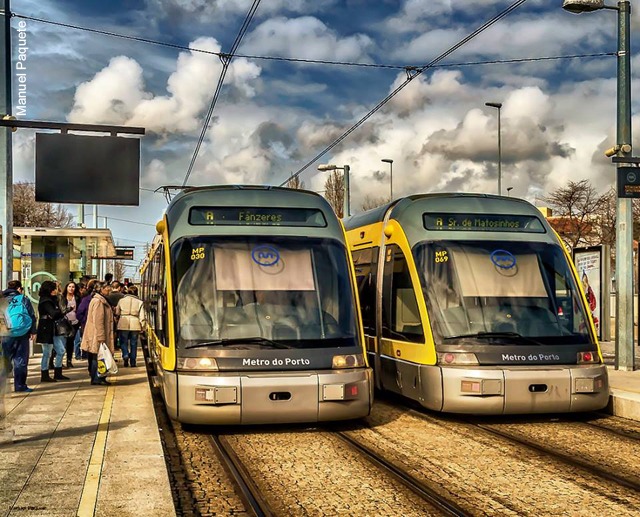
Public transport in Porto and how to move around
What are the public transport in the city of Porto? Learn here how to move around!
The city of Porto, located in Portugal, has a variety of public transportation options available for residents and visitors alike. Some of the main public transport in Porto modes include:
Metro (Metro do Porto): The Porto metro system covers several lines connecting different areas of the city as well as the surrounding suburbs. It’s an efficient way to get around the city.
Buses (STCP – Sociedade de Transportes Colectivos do Porto): The bus network covers the entire city and offers a wide range of routes connecting various neighborhoods and points of interest.
Trams: Porto is also known for its iconic trams, which run on specific routes within the city, offering a unique experience to passengers.
Funicular dos Guindais: This funicular connects the Ribeira area, near the Douro River, with the upper part of the city, providing a convenient way to access some of Porto’s higher areas.
Taxis, ride-hailing services and Uber: Like in many cities, Uber, taxis and ride-hailing services are available in Porto for more personalized and direct trips.
Taxi boat services: In Porto, there are indeed taxi boat services that operate along the Douro River, offering a unique and scenic way to travel between different parts of the city and its surroundings.
These are some of the main public transportation modes in the city of Porto, providing residents and tourists with a variety of options for getting around the city and its surroundings.
Metro Lines are the most important part of the Public Transport in Porto

The Porto Metro system consists of several lines that cover different parts of the city and its surrounding areas. Its managed by Metro do Porto. Here’s an overview of the Metro lines, stations, and schedules:
Linha A (Blue Line):
Starts from Estádio do Dragão and ends at Senhor de Matosinhos.
Major stations include Trindade, Aliados, and Casa da Música.
Linha B (Red Line):
Connects Póvoa de Varzim to Estádio do Dragão.
Major stations include Trindade, Bolhão, and Heroísmo.
Linha C (Green Line):
Runs from ISMAI to Campanhã.
Major stations include Trindade, Casa da Música, and Campanhã.
Linha D (Yellow Line):
Connects Santo Ovídio to Hospital São João.
Major stations include Trindade, São Bento, and Hospital São João.
Linha E (Purple Line):
Runs from Aeroporto to Estádio do Dragão.
Major stations include Trindade, Bolhão, and Estádio do Dragão.
Main Stations of the Metro of Porto
The Metro system has numerous stations throughout Porto and the surrounding areas. Major stations include:
Trindade: A major interchange station connecting several lines.
Casa da Música: Located near the iconic Casa da Música concert hall.
São Bento: Near the historic São Bento train station.
Estádio do Dragão: Close to FC Porto’s stadium.
Campanhã: One of Porto’s main train stations. Direct trains to Lisbon.
Schedules of the Metro of Porto
The Metro operates from early morning until around midnight. However, schedules may vary depending on the day of the week and specific line. Trains typically run every few minutes during peak hours and less frequently during off-peak times. It’s advisable to check the official Porto Metro website or consult the schedules posted at stations for the most up-to-date information regarding train frequencies and operating hours. Additionally, real-time information is often available through mobile apps or electronic displays at stations.
Bus Lines in Porto operated by STCP
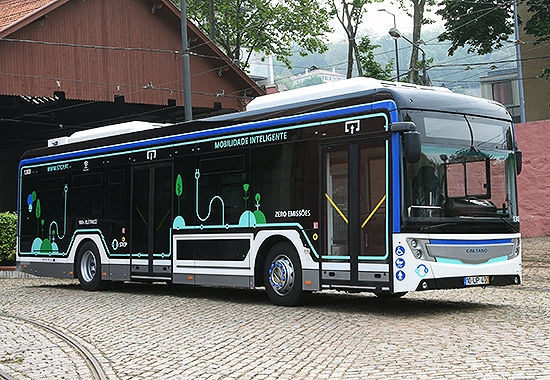
In Porto, the bus network is operated by STCP (Sociedade de Transportes Colectivos do Porto), and it covers a wide range of routes throughout the city and its suburbs. Here’s some more information about the bus lines, stations, and schedules.
STCP operates numerous bus lines covering different areas of Porto and its surrounding municipalities. Some key bus lines include:
1XX Series: These are local urban routes covering various neighborhoods within Porto.
2XX Series: These routes connect Porto with neighboring cities and towns, such as Vila Nova de Gaia and Maia.
3XX Series: Suburban routes linking Porto with more distant suburbs and towns.
4XX Series: Night bus lines operating during the late-night and early-morning hours, providing transportation when the Metro is not running.
Bus Stations of STCP buses
STCP bus stops and stations are distributed throughout Porto and its suburbs. Major bus terminals and stations include:
Bolhão: A major interchange hub located near the historic Bolhão Market.
Casa da Música: Near the iconic Casa da Música concert hall.
Trindade: Another major interchange station connecting buses with the Metro system.
Aliados: In the heart of Porto’s city center, near the City Hall and other landmarks.
Schedules of the buses in Public Transport in Porto
STCP buses operate throughout the day and into the evening, with varying frequencies depending on the line, time of day, and day of the week. During peak hours, buses typically run more frequently, while off-peak times may have longer intervals between services.
STCP provides detailed timetables and schedules for each bus line on its website and at major bus stops. Additionally, electronic displays at bus stops often show real-time information about upcoming arrivals and departures. It’s advisable to check schedules in advance, especially for less frequent routes or during holidays, to plan your journey effectively.
Tram Lines in the Public Transport in Porto
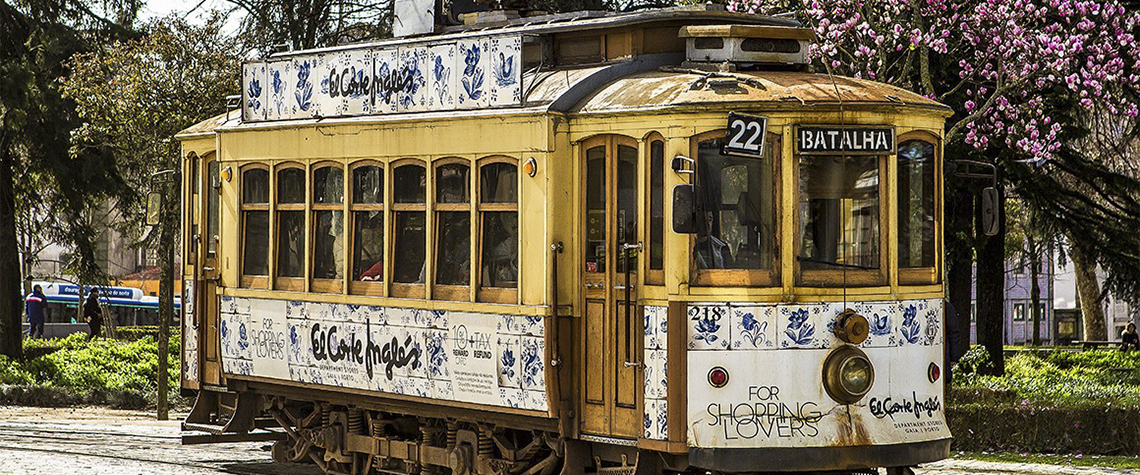
The tram network in Porto mainly consists of two tram lines:
Tram Line 1 (Porto Tram City Tour): This route operates as a tourist-oriented tram service, offering a hop-on-hop-off experience for visitors. The tram travels through Porto’s historic center, passing by major landmarks such as the Sé Cathedral, Ribeira, and Clerigos Tower. It runs in a loop, allowing passengers to disembark at various points of interest and explore before reboarding.
Tram Line 22 (Porto Tram Museum): This route is operated by the Porto Tram Museum and runs between the museum and Carmo. It provides a short journey through the streets of Porto, offering passengers a glimpse into the city’s tram history.
Tram Stations:
Tram stations along these routes are typically located near major tourist attractions and landmarks in Porto’s historic center. Some key tram stations include:
Infante: Near the Ribeira district and the Douro River.
Sé: Close to Porto Cathedral (Sé Cathedral) and the historic city center.
Carmo: Near the Clerigos Tower and the Lello Bookstore.
Schedules of the Tram in Porto
The tram schedules in Porto can vary depending on the season, with more frequent services typically offered during peak tourist months. However, the tram schedules are generally less frequent compared to other modes of public transportation in Porto, and they may not operate late into the evening.
It’s essential to check the Porto Tram City Tour and Porto Tram Museum websites for the most up-to-date information on tram schedules, especially if you’re planning to use the trams as part of your sightseeing itinerary. Additionally, it’s advisable to arrive at tram stops early, as the historic trams can sometimes be crowded, especially during peak tourist periods.
The Funicular dos Guindais is also part of the Public Transport in Porto
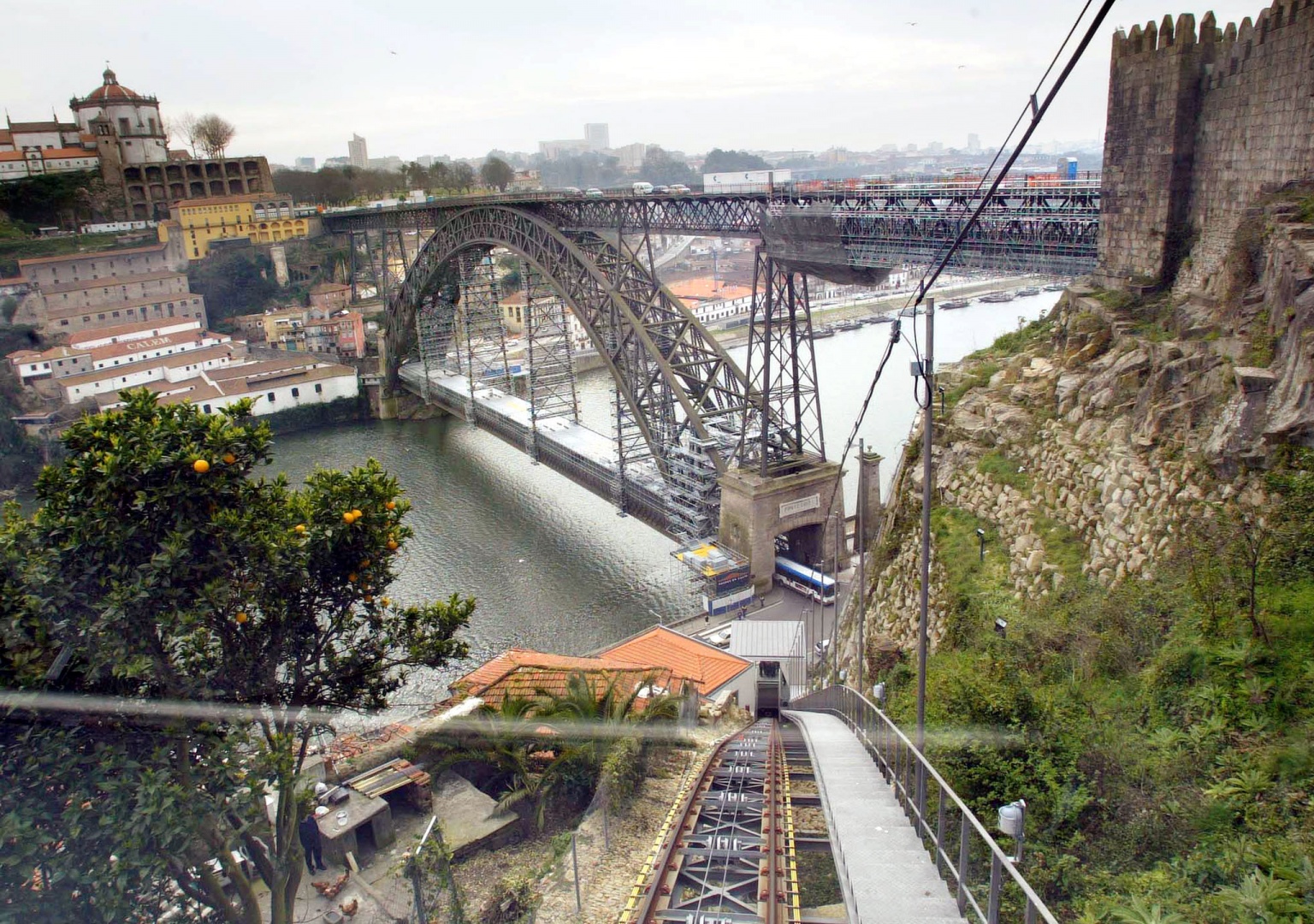
The Funicular dos Guindais is a funicular railway located in Porto, Portugal. It connects the Ribeira district, situated along the banks of the Douro River, with the Batalha neighborhood, which is located higher up in the city. Here’s some more information about the Funicular dos Guindais.
The funicular railway runs along a steep slope, providing a convenient transportation link between the lower and upper parts of Porto. The route starts near the historic Ribeira district, close to the Dom Luís I Bridge, and ascends to the higher ground near Batalha.
The Funicular dos Guindais operates on a cable system, with two cars traveling in opposite directions along a single track. Passengers can board the funicular at either station and enjoy a short but scenic ride up or down the slope.
The funicular railway was inaugurated in 2004, providing a much-needed transportation link between the Ribeira district and the upper parts of Porto. It serves both residents and tourists, offering a convenient way to access some of the city’s attractions and neighborhoods.
Stations of the Funicular of Guindais
The Funicular dos Guindais has two stations:
Ribeira Station: This station is located at the lower end of the route, near the riverfront in the Ribeira district.
Batalha Station: Situated at the upper end of the route, near the Batalha neighborhood and the São Bento train station.
Tickets for Funicular of Guindais
Passengers can purchase tickets at the stations before boarding the funicular. The ticket prices are typically affordable, making it an accessible transportation option for visitors exploring Porto.Views:
During the journey, passengers can enjoy panoramic views of the Douro River, the historic Ribeira district, and the city skyline. It’s a picturesque way to travel between different parts of Porto while taking in the city’s beauty.
Overall, the Funicular dos Guindais provides a unique and scenic transportation experience in Porto, allowing passengers to navigate the city’s hilly terrain with ease.
Taxi Companies in Porto

taxis in Porto
In Porto, as in many cities worldwide, taxis are operated by various companies and drivers. Here’s some more information about taxi services in Porto.
There are several taxi companies operating in Porto, with licensed drivers providing transportation services throughout the city and its surrounding areas. Some of the prominent taxi companies in Porto include:
- Taxi Invicta
- Radio Táxis Porto
- Táxis Autocoope
- Táxis Portistas
Each company typically operates a fleet of taxis, and you can usually identify them by their distinctive colors and markings.
Taxi Lines and Stations
Taxis in Porto do not operate along specific lines or routes like buses or trams. Instead, they can be hailed on the street or found at designated taxi stands throughout the city. Taxi stands are typically located at strategic points such as transportation hubs, popular tourist areas, major squares, and hotels.
Some key taxi stands in Porto include:
- São Bento Train Station
- Trindade Metro Station
- Ribeira (near the Dom Luís I Bridge)
- Avenida dos Aliados
Schedules of the taxis in Porto
Taxis in Porto do not operate on fixed schedules like public transportation modes such as buses or trains. Instead, they are available 24/7, providing on-demand service to passengers. However, taxi availability may vary depending on factors such as time of day, location, and demand.
During peak times, such as late evenings or weekends, taxis may be in high demand, so it’s advisable to allow extra time for waiting or consider using ride-hailing apps for quicker service.
Booking: While taxis can be hailed on the street, you can also book them in advance through phone calls or mobile apps provided by taxi companies. Some taxi companies offer smartphone apps that allow you to book, track, and pay for your ride conveniently.
Fares: Taxis in Porto operate on a metered fare system regulated by local authorities. Fares are typically calculated based on distance traveled and time spent in the taxi. It’s essential to ensure that the taxi’s meter is turned on at the start of your journey to avoid any disputes over fares.
Overall, taxis in Porto provide a convenient and reliable transportation option for travelers and residents alike, offering door-to-door service throughout the city and its surroundings.
Uber and digital taxi services operating in the Public Transport in Porto
In Porto, as in many cities around the world, digital taxi services like Uber offer an alternative transportation option to traditional taxis. Here’s some more information about digital taxi companies in Porto.
Uber is a popular ride-hailing service that operates in Porto. Users can request a ride through the Uber smartphone app, which connects them with nearby drivers. Here are some key points about Uber in Porto:
Availability: Uber operates throughout Porto and its surrounding areas, providing convenient transportation options for residents and visitors alike.
Ride Options: Uber offers various ride options, including UberX (standard rides), Uber Black (premium rides), and UberXL (larger vehicles for groups).
Payment: Payment for Uber rides is typically handled electronically through the app, with fares calculated based on factors such as distance and time. Users can link their credit card or PayPal account to the app for seamless payment.
Safety Features: Uber includes safety features such as driver background checks, real-time GPS tracking of rides, and the ability to share trip details with trusted contacts.
Other Digital Taxi Companies
In addition to Uber, there are other digital taxi companies that operate in Porto and offer similar services. Some of these companies include:
Bolt (formerly Taxify): Bolt operates as another ride-hailing service in Porto, providing an alternative to Uber.
Free Now (formerly MyTaxi): Free Now offers taxi booking services through its smartphone app, connecting users with licensed taxi drivers in Porto.
Kapten: Kapten is another ride-hailing service available in Porto, offering competitive fares and ride options.
Benefits of Digital Taxi Services
Digital taxi services offer several benefits compared to traditional taxis, including:
Convenience: Users can easily request rides and track their driver’s location in real-time through smartphone apps.
Transparent Pricing: Digital taxi apps provide upfront fare estimates, allowing users to know the cost of their ride before booking.
Cashless Payments: Payment is handled electronically through the app, eliminating the need for cash transactions.
Accessibility: Digital taxi services often have a larger fleet of drivers, increasing the availability of rides, especially during peak times.
Overall, digital taxi services like Uber provide a convenient and efficient transportation option for getting around Porto, offering users flexibility, transparency, and ease of use.
Taxi Boat Companies in the Public Transport in Porto
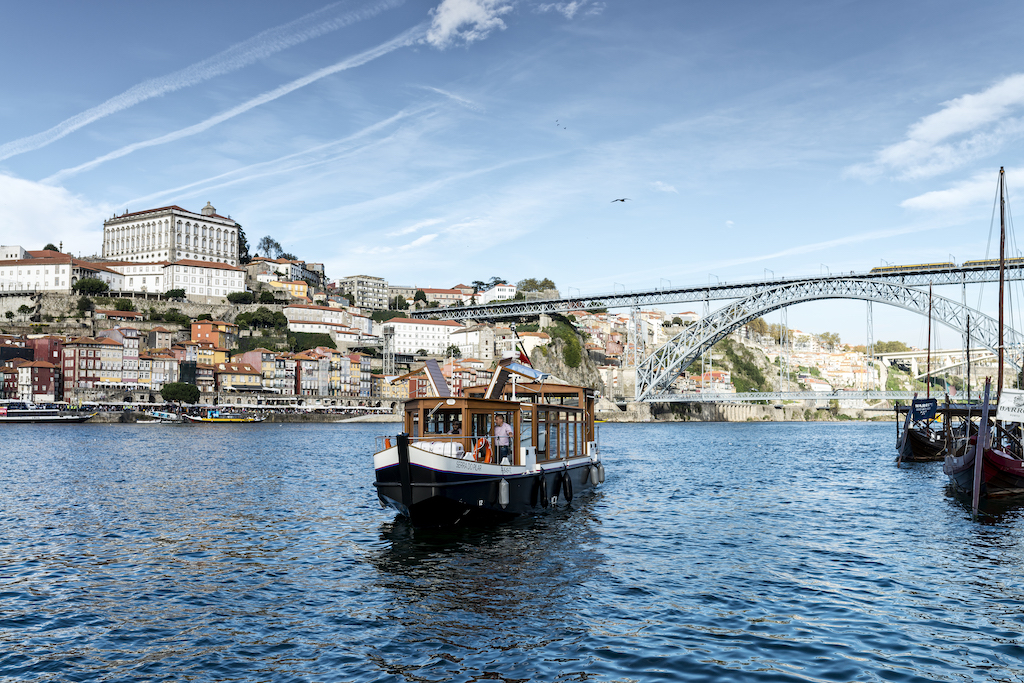
In Porto, there are indeed taxi boat services that operate along the Douro River, offering a unique and scenic way to travel between different parts of the city and its surroundings. Here’s some more information about taxi boat services in Porto.
While there are several companies offering boat tours and cruises along the Douro River, taxi boat services specifically cater to providing transportation between various points along the river. Some of the companies offering taxi boat services in Porto include:
- Porto Boat Taxi
- Douro Exclusive
- Douro à Vela
These companies typically operate smaller boats or water taxis specifically designed for passenger transportation along the river.
Taxi Boat Lines and Routes
Taxi boat services in Porto do not operate along fixed lines or routes like traditional public transportation modes. Instead, they offer point-to-point transportation between specific locations along the Douro River, such as:
- Ribeira (Porto) to Afurada (Vila Nova de Gaia)
- Ribeira to Cais de Gaia (near the Port Wine Cellars)
- Ribeira to various riverside restaurants and hotels
The routes and destinations served may vary depending on the taxi boat company and their specific services.
Taxi Boat Stations and Schedules in Porto
Taxi boat stations are typically located along the riverfront in Porto, particularly in the Ribeira district, which is a popular area for tourists and locals alike. You can find taxi boat stations near major landmarks, piers, and riverside promenades.
Taxi boat schedules may vary depending on the company and the time of year. During peak tourist seasons, such as summer, taxi boat services may operate more frequently, while in quieter months, schedules may be reduced. It’s advisable to check with the taxi boat companies directly or inquire at their ticket offices for current schedules and availability.
Booking and Fares of boat taxis in Porto
While some taxi boat companies may offer walk-up service at their stations, it’s often advisable to book in advance, especially during busy periods or if you have specific timing requirements. You can typically book taxi boat services online through the company’s website or by contacting them directly.
Taxi boat fares are usually determined by factors such as the distance traveled and the number of passengers. It’s essential to inquire about fares before boarding to avoid any misunderstandings. Additionally, payment methods may vary, so it’s a good idea to confirm accepted payment options with the taxi boat company in advance.
Overall, taxi boat services in Porto provide a convenient and enjoyable way to explore the city’s waterfront and access various riverside attractions.





